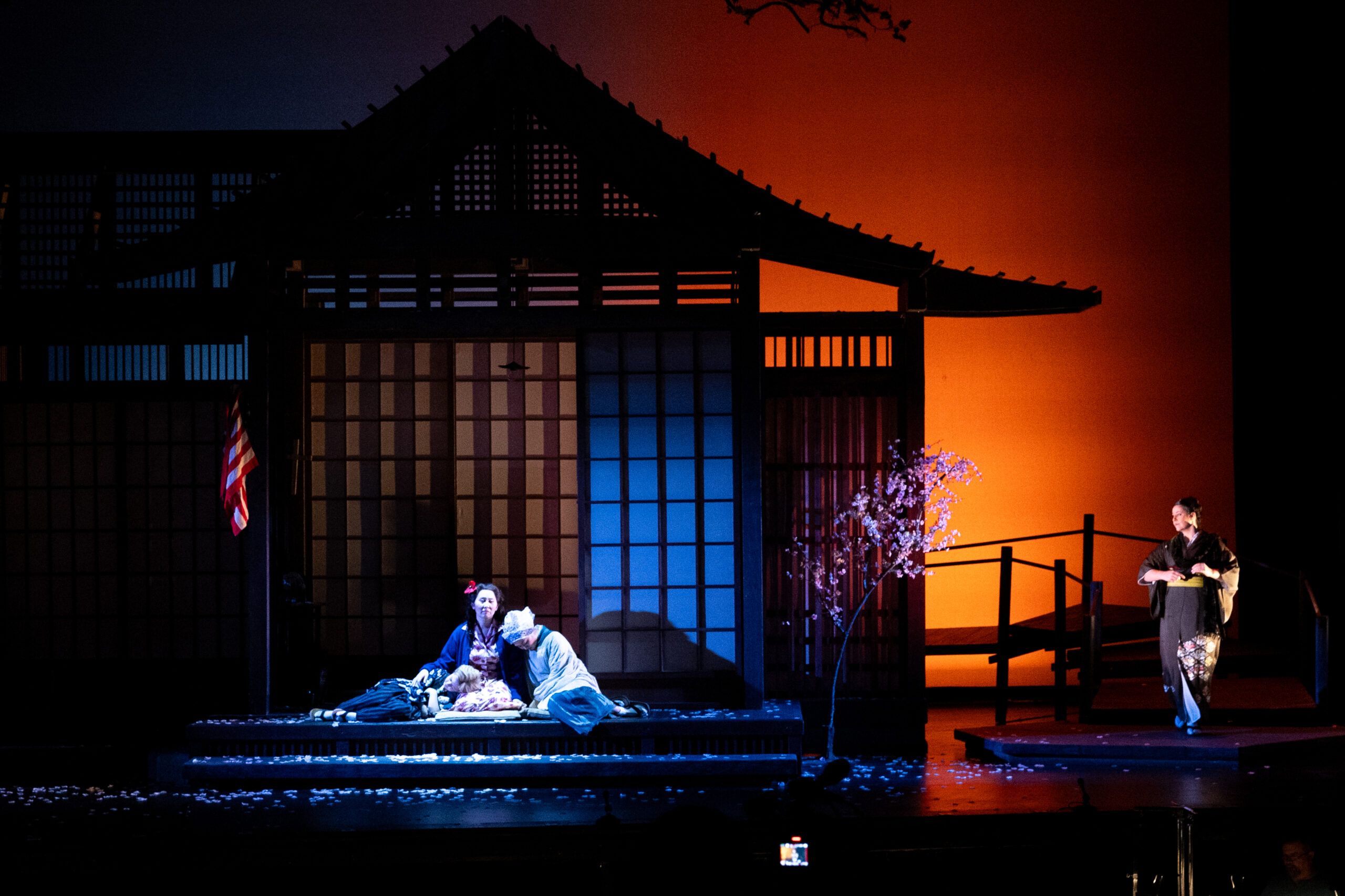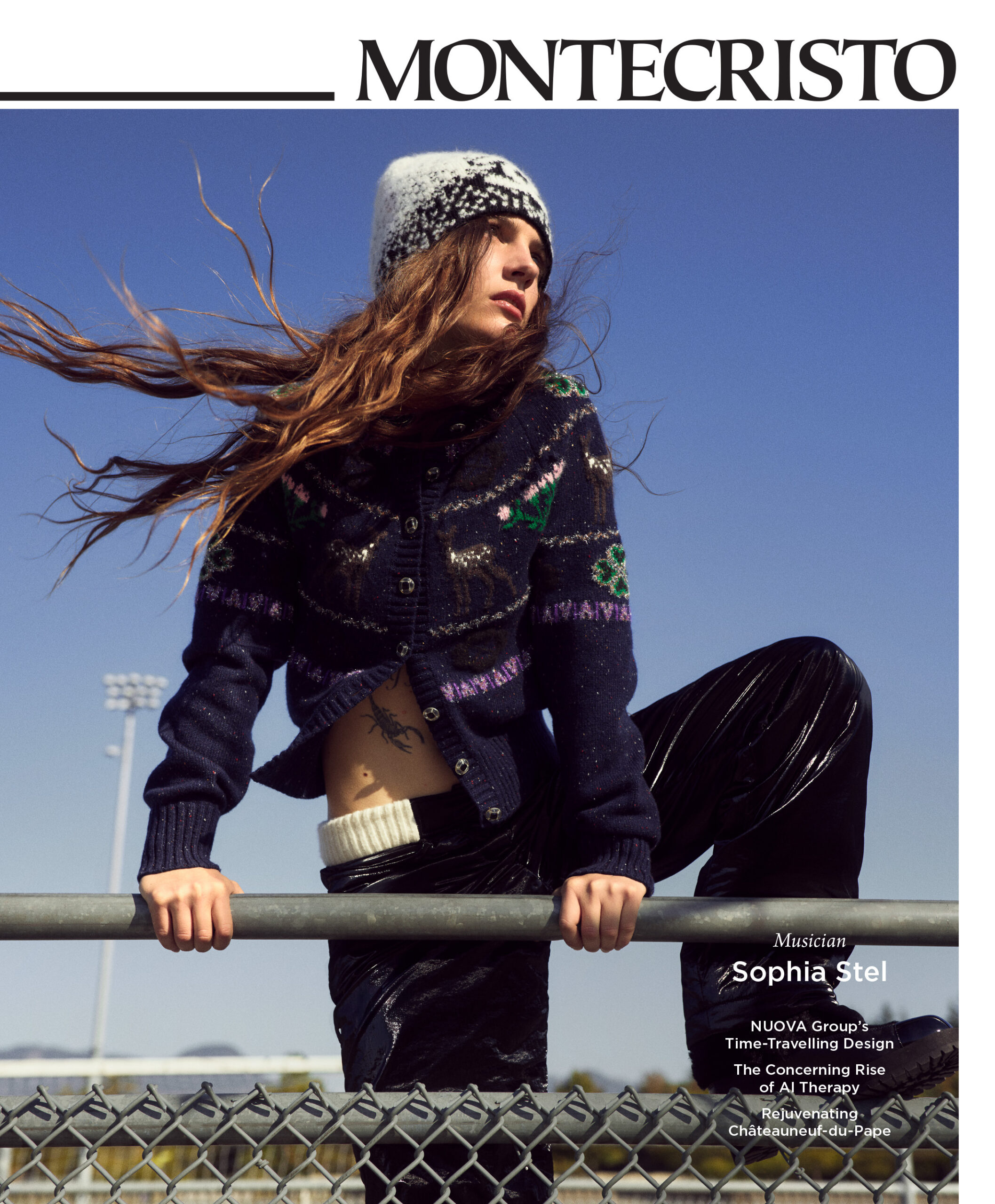A whirlwind East-meets-West romance, an abandoned teen bride, an ultimate sacrifice—and a devastatingly emotive score. Over more than a century, the Italian composer Giacomo Puccini’s Madama Butterfly has established its legacy as one of the most widely celebrated and performed operas in the world. It has also encapsulated undeniably problematic, and pervasive, stereotypes of East Asian culture, and women in particular. It has repeatedly been played out as an Orientalist tragedy (often with white performers representing Japanese characters in “yellowface”) with a dutiful, doomed exotic beauty at its heart: the young Nagasaki girl Cio-Cio-San, who is apparently willing to give up her life for the faithless U.S. naval officer, Pinkerton.
Puccini’s original 1904 work has inspired numerous offshoots, from movie adaptations to the blockbuster musical Miss Saigon (which relocates its melodrama to the Vietnam War). Increasingly, it has also given rise to sharp reassessments—and the acclaimed stage director Mo Zhou presents an insightful new production of Madama Butterfly as part of Vancouver Opera’s 65th-anniversary season. Here, Cio-Cio-San’s story effectively takes flight, by shifting its time frame without changing the setting or a note of the music.
“Madama Butterfly was always in the cultural fabric of my upbringing, and I’d heard all these famous arias, but I never really fully understood the plot until I became an opera director,” explains Zhou, who was born in Nanjing, China, and now lives in the U.S. (where she is an assistant professor of music at the University of Michigan). “When you study Puccini, why he composed opera, and what Madama Butterfly attributes to all the Asian female community, it becomes clear that the story is completely constructed under the white male gaze, and the hypersexualization has a lot to do with the popularity of Cio-Cio-San.”
Zhou’s creative repertoire has proved richly far-ranging, from early Baroque compositions to 21st-century premieres to date, however, she had previously steered clear of presenting Madama Butterfly. “I avoided it for years, even when I was asked to assist on or direct productions of Butterfly,” she admits. “But as a director, there’s also a puzzle in the back of your mind, and you’re trying to figure out how do I solve it properly, dramaturgically.”
For Zhou, part of the puzzle was how to understand the motivation of the Asian characters, as fully rounded protagonists rather than stereotyped constructs. She began thinking about the lived experience of Japanese war brides, women who married U.S. servicemen and emigrated abroad after the Second World War.
“Post-World War II, about 45,000 Japanese women married American soldiers and moved to America,” Zhou says. “Then you dig into that part of history, and you realize those women were branded as traitors from both sides. They were outcasts of their own homeland, and they were never trusted in American society.” She notes that Stanford University has an extensive war brides oral history archive, and some of the stories the women share are horrifying—and yet, this group of women disappeared from the mainstream narrative.
“Once you piece all of this together, all of a sudden, Butterfly clicks,” she says. It gave her the idea of setting the show in 1946, within a year of the U.S. atomic bombing of Nagasaki: “In that historical social backdrop, every single Japanese character’s motivation becomes so clear and relatable to me as an Asian woman,” she explains. Cio-Cio-San would be like any other woman of that time—not because she fantasizes about a white man, but for pure survival instinct. It also reflects postcolonial mentality. “In Act 1, it’s almost like they are playing a stereotype that they think will please Americans, because all they want to do is get out of Japan—at that time, everyone thought there was going to be another atomic bomb.”
I feel like it’s very important for us as artists of colour, we keep showing up—because every day, just by showing up, we are challenging the status quo.
Zhou is very personable company, as well as intensely meticulous about her work, which she describes as “intentional storytelling.” Her attention to detail feels deep-rooted: she was raised by a journalist father and a mother who switched careers from ballet dancer to medical scientist. Zhou would make her own vocational switch, originally moving to the States to study law before discovering her passion and forte for performing arts. While developing Madama Butterfly, she took a research trip to Nagasaki, noting both the uniquely global nature of the city (during Japan’s Edo era of 1600-1868, this was its only port open to foreign trade) and that Puccini’s source material derived from a real-life (19th-century) affair.
In the original incident, the Japanese girl doesn’t die by suicide, Zhou says. “I noticed that for both Butterfly and Turandot [Puccini’s 1920s opera, about a murderous Chinese princess], once there’s a white male European creator getting involved in the storytelling, all those stereotypical tropes will be added in. But because Butterfly is based on a real event, there is clear oral history documentation about what happened. ” That oral history came to life, Zhou notes, when she visited, with the help of a translator, every spot that historical account referenced in Nagasaki.
She also points out that Puccini wrote Madama Butterfly after he had survived a near-death car accident in 1903. “I think, in Act 2 [which features the legendary aria “Un bel dì, vedremo”], there are a lot of genuine much deeper thoughts in his musical gesture,” she argues. Act 2 in Zhouʻs production takes place in 1952, on the eve of the American withdrawal from Japan. “So many women were left behind with kids, thinking the American soldiers would come back. Life in Japan has gone back to normal, except Cio-Cio-San still lives an illusion, because she wants to be the perfect American.”
Cio-Cio-San’s illusion is poignantly unravelled here, but crucially, her fate is never sensationalized. It becomes, as Zhou says, “an act of dignity.”
Zhou recalls: “I watched a lot of traditional Japanese movies growing up, and then I watched my friends, all these very strong Asian women. Whatever the Western stereotypical idea is, Asian women might appear to be very easygoing on the surface, but we have a steel backbone.” Such fortitude ultimately underpins the role of Cio-Cio-San, played by both Yasko Sato and Karen Chia-Ling Ho for the Vancouver Opera run. Directing Ho, Zhou told her: “However devastated you are, you need to focus on the dignity and the pride, the backbone of your character.”
Across stage, screen, and page, there has evidently been progress in mainstream cultural representation, but it has also been hard fought and long overdue. As a young performing arts graduate, Zhou held qualifications from prestigious institutions including Columbia and Juilliard, yet still faced barriers born of ignorance—at one interview, a producer informed her that musical theatre was “too American” for her to succeed. By contrast, opera proved relatively open to international talent—and Zhou already had an aptitude for reading music, as well as speaking Italian, German, and French.
“I feel like it’s very important for us as artists of colour, we keep showing up—because every day, just by showing up, we are challenging the status quo,” she says, smiling.
On Madama Butterfly, Zhou’s creative team are all first-generation Asian women. “When I brought this concept to them, everyone related to it so much,” she says. “I’ll never forget, on my opening night, my lighting director said, ‘Remember this moment. This is us as Asian women, taking back the ownership of our narrative.’
“I always say that this production is dedicated to all the women and children who have gone through the Pacific War in World War II, because that page in history is never discussed enough in the mainstream.”
Zhou’s Vancouver Opera collaboration brings her to a Canadian city with significant East Asian heritage. It also marks her return to a place where she earned early career recognition—winning the Opera America Director-Designers Showcase here in 2013 (“Vancouver has a very special place in my heart,” she says, beaming). Now, as an internationally celebrated director, her “intentional storytelling” continually connects audiences across backgrounds and generations.
“That’s what keeps me doing opera, in a way,” she says. “Wherever we go, we are healing, and then rebuilding, weaving a cultural fabric together with the local community.”
Read more from our Spring 2025 issue.









